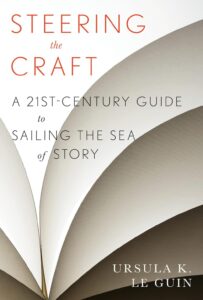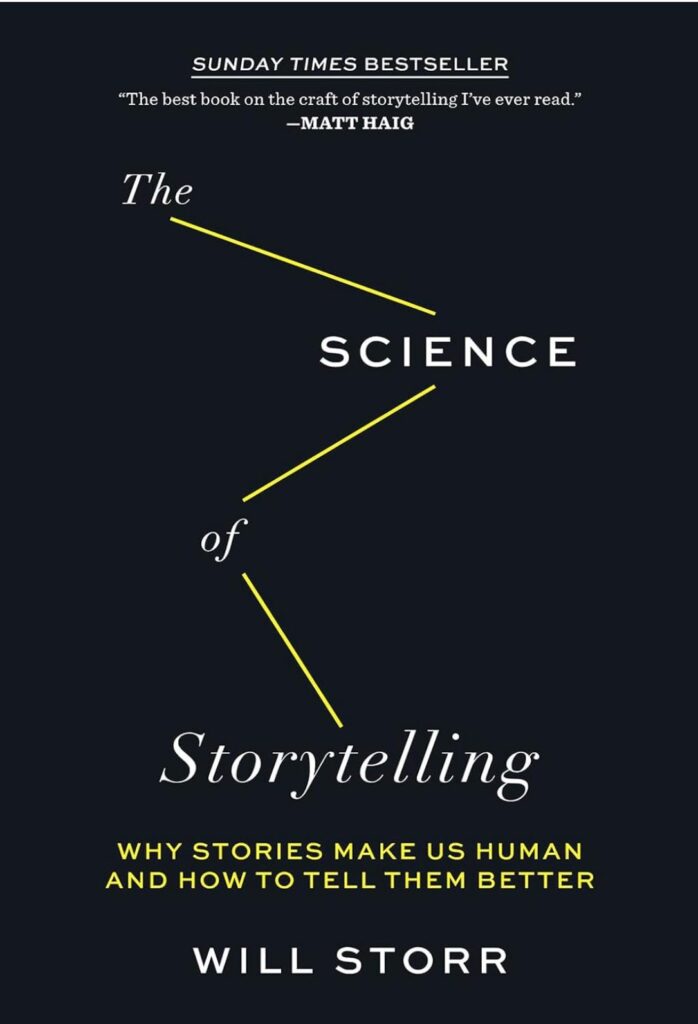Dialogue is a crucial element in Hucow stories, helping to build tension, reveal character, and drive the plot forward. In a genre that often focuses on power dynamics, transformation, and intense emotional experiences, strong dialogue can be the key to making these themes come alive.
Here are some tips for writing effective dialogue in Hucow stories that will enhance both character development and the overall narrative.
Table of Contents
Toggle1. Keep the Power Dynamics Clear
In Hucow stories, the power dynamic between the heroine and the alpha male is often central. Dialogue can be a powerful tool to express this relationship. The way the alpha male speaks—confident, direct, dominant—should reflect his control, while the heroine’s dialogue might show resistance, fear, or confusion.
Example:
Alpha Male: “You will submit. It’s not a question of if, but when.”
Heroine: “You don’t control me. I’ll never give in.”
- Tip: Use short, commanding sentences for the alpha male, while giving the heroine more complex, hesitant dialogue early on. As the heroine’s transformation progresses, her dialogue can reflect her growing acceptance of the power dynamics.
2. Show Emotional Conflict through Dialogue
Your characters’ internal struggles should be reflected in their speech. Whether the heroine is resisting the physical transformation or grappling with her own emotional walls, use dialogue to show her hesitation, doubt, or fear.
Example:
Heroine: “I don’t know if I can do this… Everything about this feels wrong, but…”
Alpha Male: “You’ll learn to love it. Trust me. You’re stronger than you think.”
- Tip: Allow characters to trail off, hesitate, or leave things unsaid when they’re emotionally conflicted. This adds layers of tension and makes the heroine’s transformation feel more realistic and gradual.
3. Balance Dialogue with Internal Monologue
Internal monologue is a powerful tool in Hucow stories, where much of the transformation is emotional and internal. Pairing dialogue with a character’s inner thoughts can reveal what they’re truly feeling, especially when there’s a disconnect between their words and their emotions.
Example:
Alpha Male: “You’re doing well. You’re almost there.”
Heroine (Internal Monologue): But why do I feel like I’m losing myself? Why does his approval make me crave more?
- Tip: Use internal monologue to add layers to your heroine’s dialogue. Even if she’s speaking confidently, her inner thoughts might reveal doubt or fear, making her character more complex.
4. Use Dialogue to Build Tension
Dialogue is a key tool for building tension, especially when characters are in conflict. Use short, clipped sentences or quick back-and-forth exchanges to show frustration, power struggles, or unresolved emotions. Let characters interrupt each other or leave things unsaid to heighten tension.
Example:
Heroine: “I’m not some puppet for you to control.”
Alpha Male: “Control? No. But I will teach you obedience.”
Heroine: “I won’t—”
Alpha Male: “You will.”
- Tip: Quick exchanges can ratchet up tension in intense scenes. Interruptions or unfinished sentences can create a sense of urgency or frustration.
5. Vary Sentence Length and Structure
Not all dialogue should be the same. Varying the length and structure of dialogue can create rhythm and pacing that keeps your readers engaged. Alpha male characters might speak in short, declarative sentences, while the heroine might ramble or hesitate if she’s nervous or conflicted.
Example:
Heroine: “I can’t… I mean, I’ve never done anything like this before. How can I just—”
Alpha Male: “You will. And you’ll love it.”
- Tip: Varying sentence lengths in dialogue helps to create a more natural flow and can reflect the characters’ emotional state. Shorter sentences for authority, longer ones for vulnerability.
6. Show Emotional Conflict through Dialogue
Your characters’ internal struggles should be reflected in their speech. Whether the heroine is resisting the physical transformation or grappling with her own emotional walls, use dialogue to show her hesitation, doubt, or fear.
Example:
Heroine: “I don’t know if I can do this… Everything about this feels wrong, but…”
Alpha Male: “You’ll learn to love it. Trust me. You’re stronger than you think.”
- Tip: Allow characters to trail off, hesitate, or leave things unsaid when they’re emotionally conflicted. This adds layers of tension and makes the heroine’s transformation feel more realistic and gradual.
8. Use Subtext to Create Depth
What characters don’t say can be just as important as what they do. In Hucow stories, where power dynamics and emotional conflicts are central, subtext can reveal the tension between characters or highlight unspoken desires.
Example:
Heroine: “I… don’t know if I can trust you.”
Alpha Male: “You don’t have to. But you will obey.”
- Tip: Let your characters say one thing while meaning something entirely different. The heroine might verbally resist the transformation, but her body language or hesitation could reveal her growing curiosity or acceptance.
9. Establish the Heroine’s Emotional Arc
As the heroine’s emotional journey progresses, her dialogue should reflect this growth. Early in the story, her speech might be defiant, confused, or scared. As she moves toward acceptance, her tone should shift, showing more confidence, understanding, or desire for the new life she’s embracing.
Example (Early in the story):
Heroine: “I’m not going to let you do this to me. You’re sick.”
Alpha Male: “You don’t understand yet. But you will.”
Example (Later in the story):
Heroine: “I need more. I didn’t think I’d want this, but now… I crave it.”
Alpha Male: “I told you. This is what you were made for.”
- Tip: Track your heroine’s growth through her dialogue. Let her shift from resistance to acceptance, from fear to confidence, and reflect that progression in her speech.
10. Avoid Over-Explanations
Sometimes, less is more. Especially in emotionally charged scenes, you don’t need to spell everything out through dialogue. Let the emotions speak for themselves. A single, powerful line can often say more than an entire paragraph of exposition.
Example:
Heroine: “You think I’ll just submit to you?”
Alpha Male: “Yes.”
- Tip: Keep it simple when the moment calls for it. Use the tension in the scene to carry the weight of the dialogue, rather than over-explaining emotions or motivations.
11. Use Dialogue to Explore the Heroine’s Desires
In Hucow stories, the heroine often struggles with desires she doesn’t fully understand at first. Dialogue is a great way to explore these desires as they surface. Have the heroine express confusion, hesitation, or curiosity, while the alpha male can coax her toward acceptance.
Example:
Heroine: “I shouldn’t want this… but I can’t stop thinking about it.”
Alpha Male: “Because it’s what you need. It’s what you were meant for.”
- Tip: Let the heroine’s dialogue reflect her growing awareness of her own desires. This back-and-forth between denial and acceptance is key to building her emotional arc.
12. Show the Alpha Male’s Tender Side through Dialogue
Even though the alpha male is dominant, it’s important to show his softer, more caring side. His dialogue can shift from commanding to comforting as the heroine begins to accept her transformation. This can create a more complex and compelling dynamic.
Example:
Alpha Male: “You’re not just mine to control. You’re mine to protect.”
Heroine: “I didn’t know I needed that… until now.”
- Tip: Balance the alpha male’s dominant dialogue with moments of tenderness. This contrast will make him a more nuanced and interesting character, and it deepens the emotional connection between him and the heroine.
13. The Alpha Male Testing the Heroine’s Boundaries
Even though the alpha male challenges the heroine, it’s essential to show that his ultimate goal is her transformation. This dialogue illustrates the tension between resistance and the inevitable change.
Example:
Alpha Male: “Do you think you can fight this forever?”
Heroine: “I have to. It’s who I am.”
Alpha Male: “No, it’s who you were. But that’s changing.”
- Tip: Use this type of dialogue to highlight the alpha male’s role in guiding the heroine through her transformation, pushing her boundaries while maintaining a sense of inevitability.
14. The Heroine Admitting Fear
When the heroine starts to voice her fears, it opens up a space for the alpha male to provide reassurance and support, showing his protective side.
Example:
Heroine: “I don’t know if I’m strong enough to handle this.”
Alpha Male: “You don’t have to be strong. You just have to let go.”
- Tip: This dialogue is crucial for developing the emotional bond between the characters, showing vulnerability and the beginnings of trust.
15. The Heroine Questioning Her Desires
As the heroine grapples with her conflicting emotions and desires, her dialogue can reflect her inner turmoil, adding layers to her character development.
Example:
Heroine: “I don’t want this… do I?”
Alpha Male: “It’s not about what you want anymore. It’s about what you need.”
- Tip: Use such dialogue to explore the tension between will and desire, deepening the psychological complexity of the heroine.
16. The Alpha Male Reassuring the Heroine
In moments of doubt, the alpha male’s role is to reassure and guide the heroine, helping her see the potential of her transformation.
Example:
Heroine: “I feel like I’m losing myself.”
Alpha Male: “No. You’re finding who you really are. I’m just helping you see it.”
- Tip: This type of dialogue reinforces the theme of transformation and the alpha male’s role as both a protector and a catalyst for change.
17. Resistance in the Face of Control
When the heroine pushes back against the alpha male’s dominance, it highlights her struggle for autonomy and his determination to overcome it.
Example:
Heroine: “You can’t just take control of my life.”
Alpha Male: “I already have. And soon, you won’t want it any other way.”
- Tip: This dialogue is effective for building tension and dramatizing the conflict between the heroine’s resistance and the alpha male’s control.
18. A Moment of Tenderness
Showing the alpha male’s tender side can humanize him and make the dynamic between him and the heroine more complex and engaging.
Example:
Alpha Male: “You’re safe with me. Always.”
Heroine: “I didn’t think I could feel safe here… but I do.”
- Tip: Use these moments to balance the power dynamics with warmth, enhancing the emotional depth of their relationship.
19. The Heroine Confronting Her Fears
Dialogue that showcases the heroine confronting her fears can be a turning point in her transformation, marking a shift from resistance to acceptance.
Example:
Heroine: “What if I’m never the same again?”
Alpha Male: “You won’t be. You’ll be something better.”
- Tip: This type of dialogue can catalyze the heroine’s growth, showing her evolution from fear to enlightenment.
20. Building Tension with a Rival
Introducing a rival can create additional layers of conflict and help highlight the heroine’s unique qualities or struggles.
Example:
Rival Hucow: “He won’t want you for long. You’re not strong enough.”
Heroine: “I’ll prove you wrong. I’ll prove it to myself.”
- Tip: Use rivalries to build tension and push the heroine to assert her place within the new world she is becoming a part of.
21. The Heroine Accepting Her Role
As the heroine begins to accept her transformation, her dialogue should reflect a deeper understanding and embrace of her new identity.
Example:
Heroine: “I never thought I’d say this… but I’m ready.”
Alpha Male: “Good. Now you understand what you were meant for.”
- Tip: This dialogue marks a pivotal moment in the story, representing a significant emotional and psychological shift for the heroine.
22. Confronting the Alpha Male’s Power
The heroine questioning the alpha male’s motives can deepen the plot, adding intrigue and emotional complexity.
Example:
Heroine: “Why are you doing this? What do you get out of it?”
Alpha Male: “I don’t need anything from you. But you need this.”
- Tip: Use these confrontations to explore the underlying motivations of the alpha male, adding layers to his character and their relationship.
23. The Heroine’s Emotional Breakdown
An emotional breakdown can be a raw, revealing moment that deepens the reader’s empathy for the heroine and her situation.
Example:
Heroine: “I don’t know who I am anymore. I don’t know what to do.”
Alpha Male: “You don’t have to know. Just trust me. I’ll show you the way.”
- Tip: Use this type of dialogue to highlight the heroine’s vulnerability and the alpha male’s guiding role, enhancing their emotional connection.
24. A Playful Exchange
Injecting a lighter, playful tone can add dimension to the relationship, showing that the connection isn’t solely about dominance and submission.
Example:
Alpha Male: “You’re getting used to this. Admit it.”
Heroine: “I’m not… okay, maybe a little.”
- Tip: Light-hearted dialogue helps balance the intense moments and develops the characters’ relationship in a more rounded manner.
25. The Heroine Craving More
When the heroine starts to embrace her desires, the dialogue can explore her inner conflict and acceptance, illustrating a significant transformation.
Example:
Heroine: “I didn’t think I’d want this… but I do. I need more.”
Alpha Male: “Then you’ll have more. As much as you need.”
- Tip: This dialogue is crucial for depicting the heroine’s journey towards accepting and even craving her new identity.
26. A Final Moment of Resistance
A last stand of resistance can serve as a climax, showcasing the heroine’s final transformation into acceptance.
Example:
Heroine: “This isn’t who I am. I can’t lose myself to this.”
Alpha Male: “You’re not losing yourself. You’re becoming who you were always meant to be.”
- Tip: Use this dialogue to create a powerful narrative moment that defines the heroine’s transition from resistance to acceptance.
27. Happily Ever After
Concluding with a happily ever after, the dialogue can affirm the heroine’s new life and her bond with the alpha male.
Example:
Heroine: “I didn’t know this was what I needed. But now, I can’t imagine life any other way.”
Alpha Male: “Because you’re finally home.”
- Tip: This dialogue should encapsulate the journey and transformation of the heroine, providing closure and satisfaction to her emotional arc.
Final Thoughts
These dialogue types give you a variety of tools to explore different emotional beats and character dynamics in your Hucow stories.
Whether you’re building tension, revealing inner conflict, or deepening the emotional connection between characters, dialogue is a powerful way to shape the narrative and guide the reader through the heroine’s transformation.
Use these examples to enhance key moments and keep the emotional journey rich and engaging.
References and More Information
Here are three unique references that were utilized for insights into crafting dialogue for Hucow characters, especially focusing on emotional dynamics, power play, and character development:
Writing Believable Dialogue by Script Magazine
This resource is crucial for understanding how to write dialogue that resonates with readers and supports the narrative arc, making it perfect for authors looking to improve character interaction in Hucow stories.Dialogue Secrets from Bestselling Authors by Writer’s Digest
This article compiles advice from several bestselling authors on how to write dialogue that drives the plot and develops the characters, with practical tips that can be applied to Hucow genre writing.Character Voice: Bringing Your Cast to Life Through Dialogue by The Creative Penn
An invaluable resource for deepening understanding of how dialogue can express the unique voice and psychological depth of Hucow characters, helping writers craft more impactful and engaging narratives.
These references are intended to provide foundational techniques and advanced insights into crafting dialogue that not only moves the story forward but also deepens the reader’s connection to the characters, enhancing both emotional and narrative impact in Hucow stories.







































